

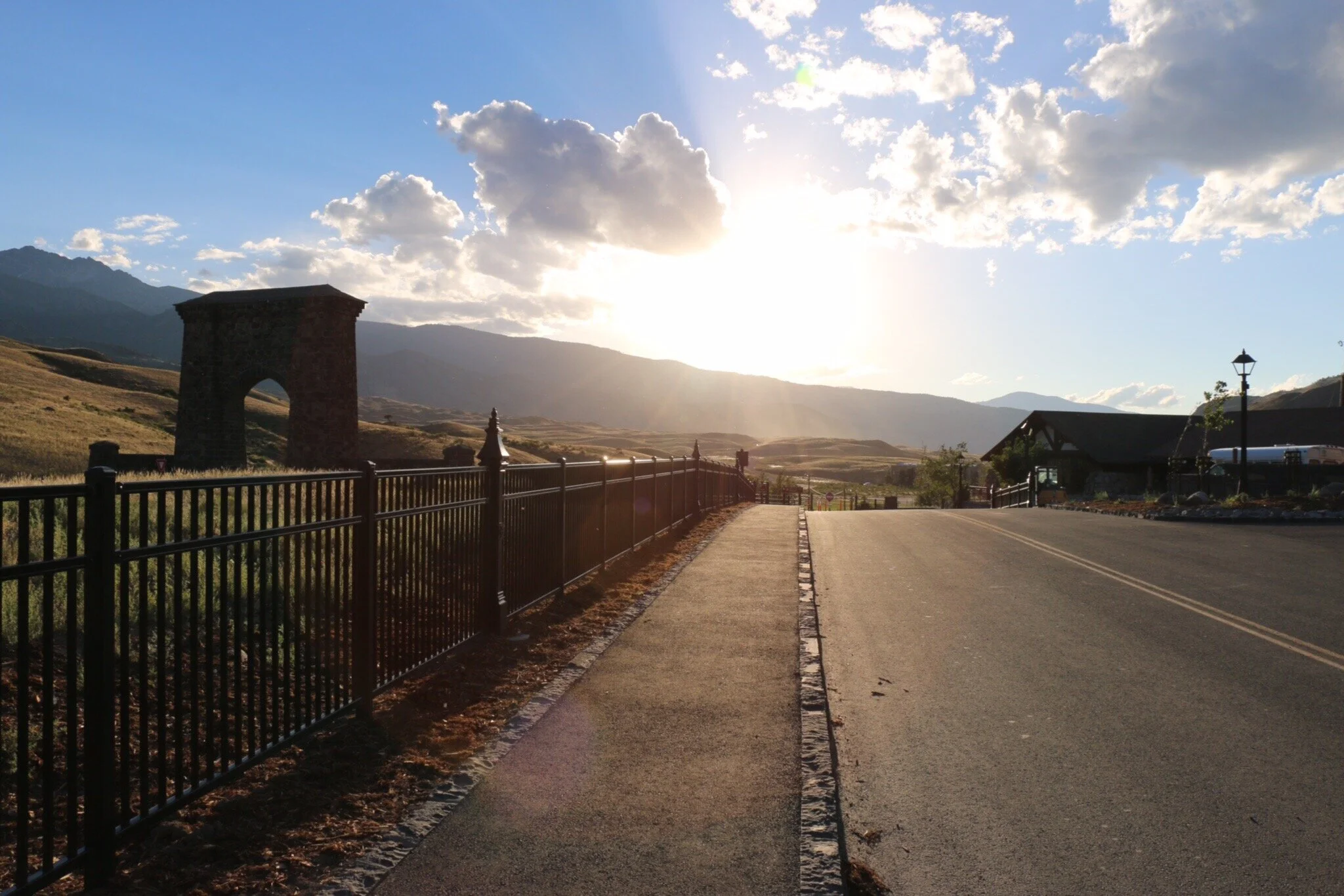

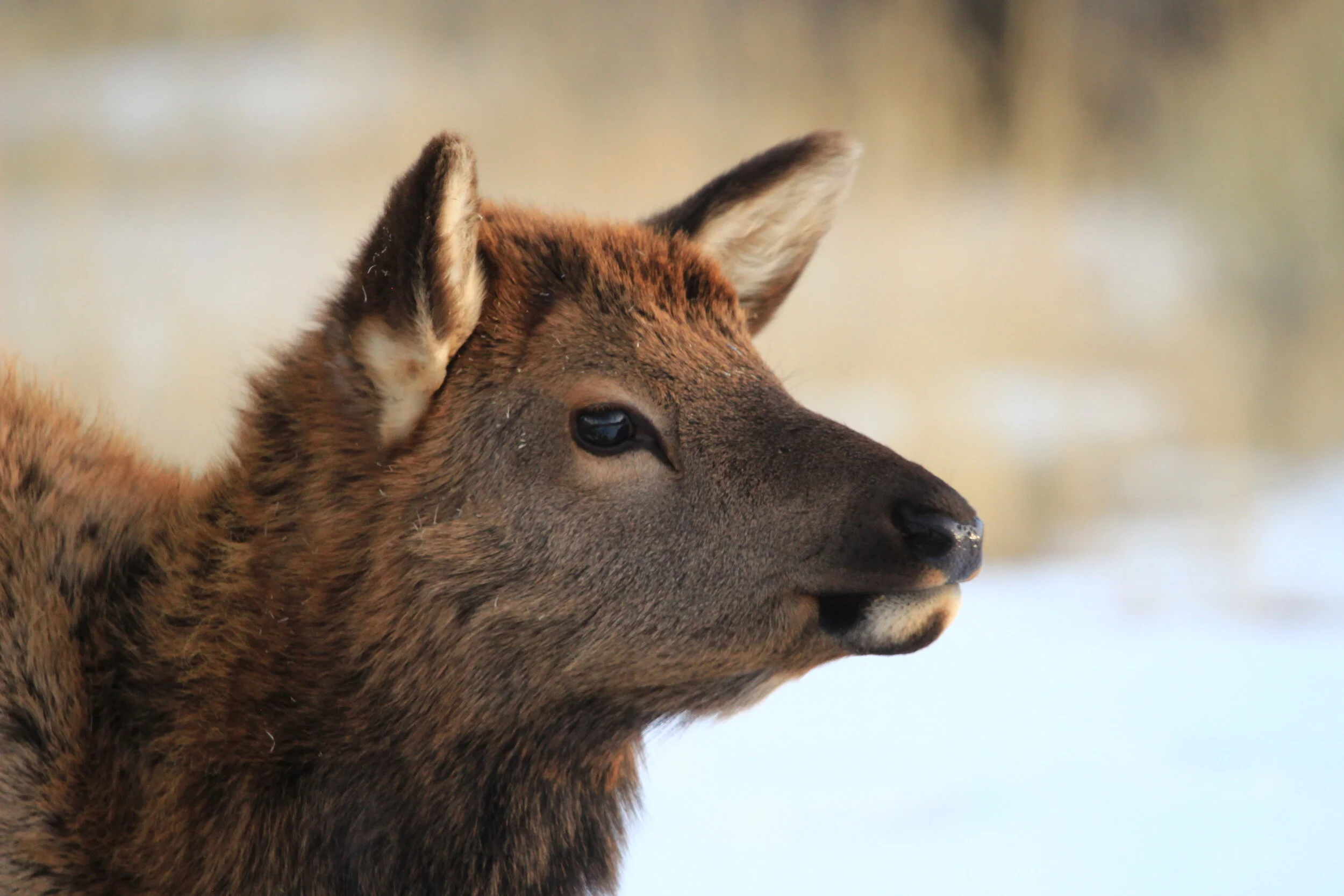

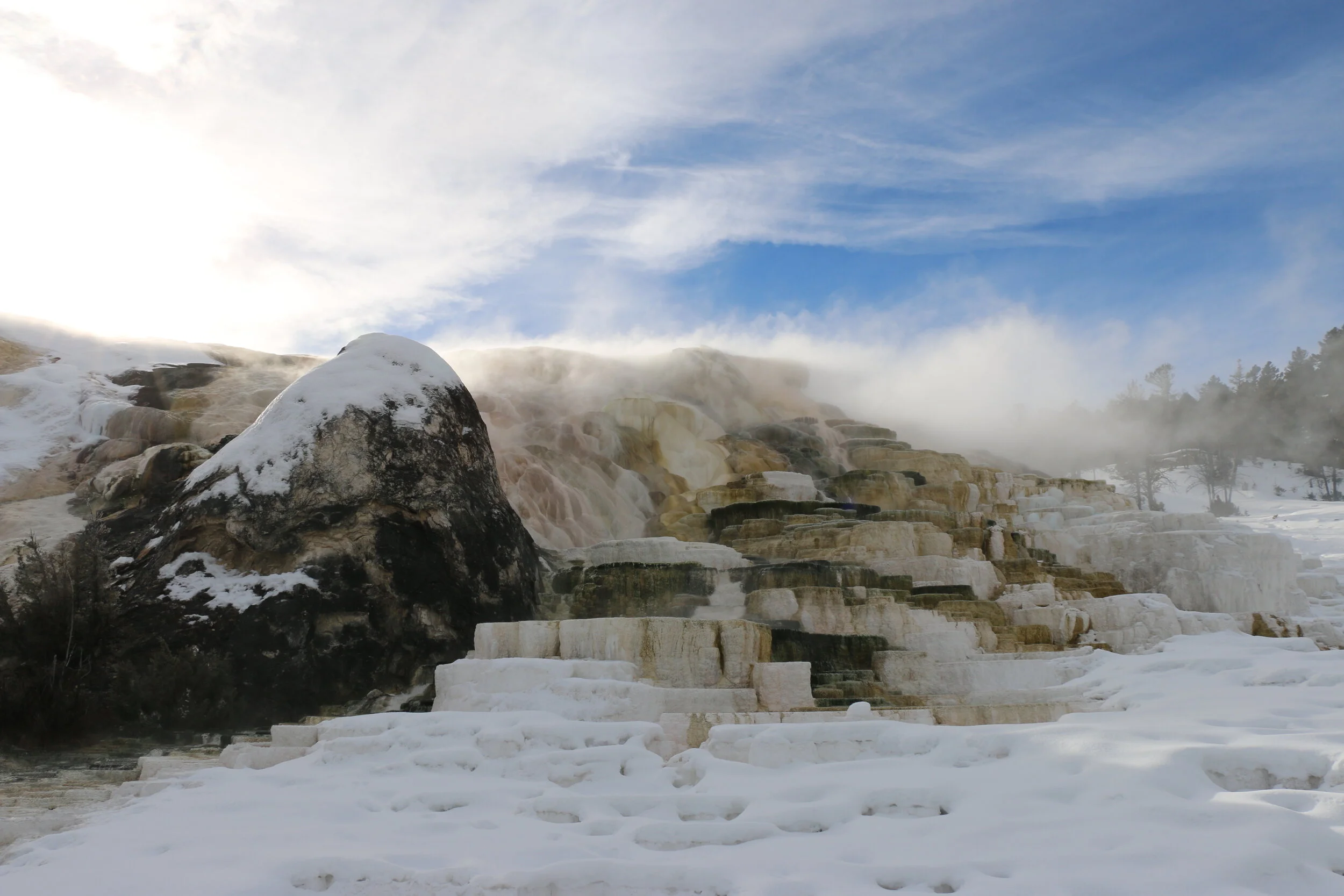




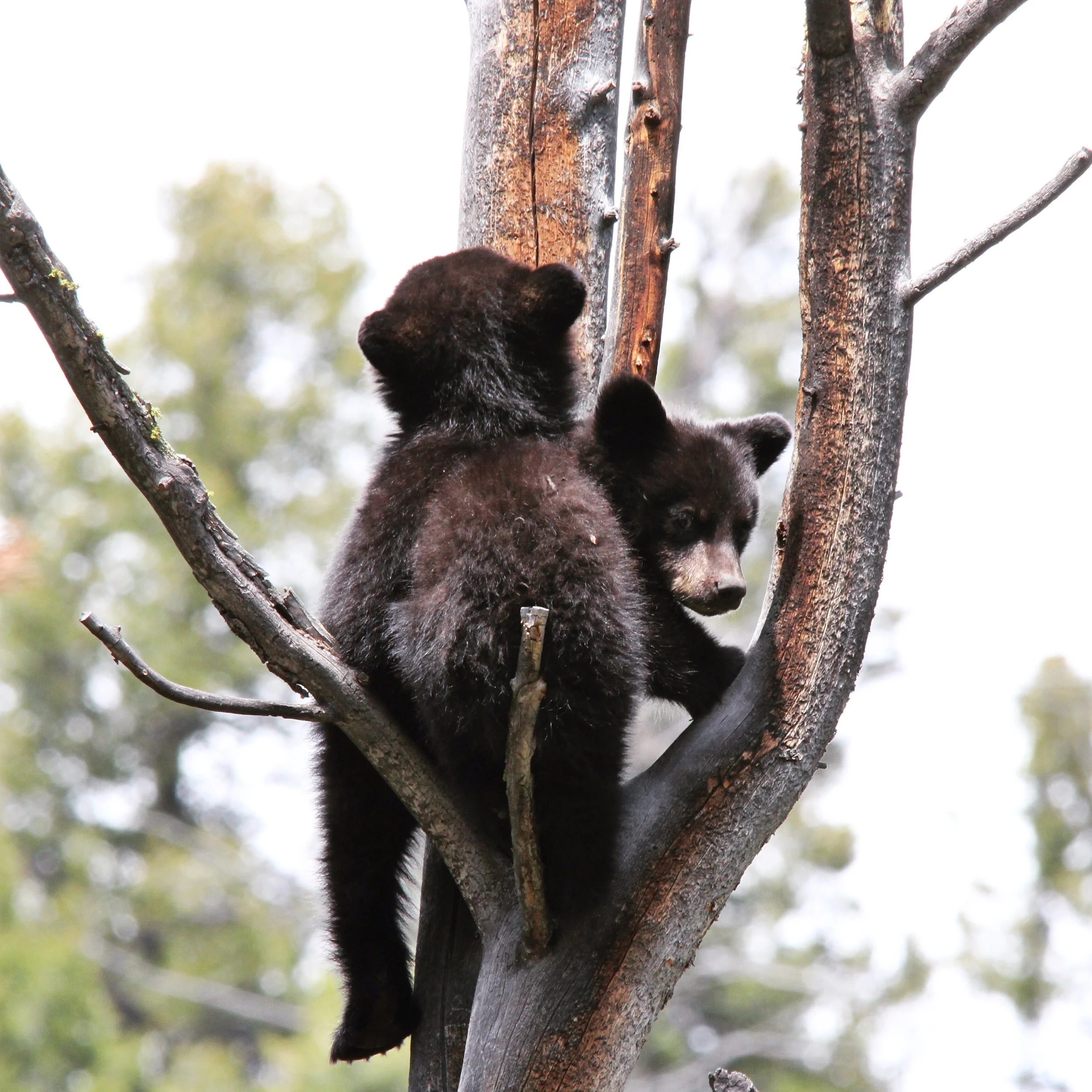
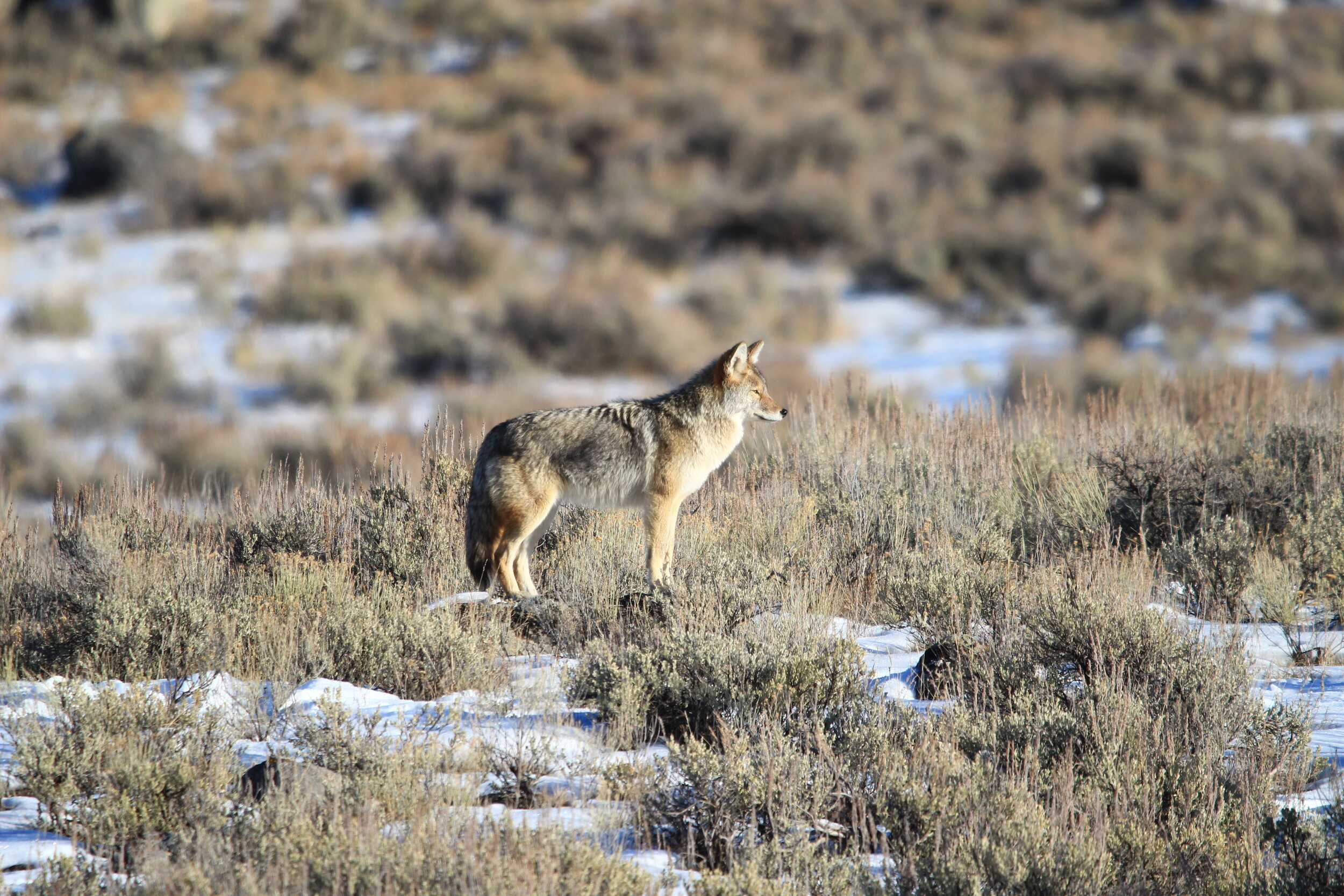



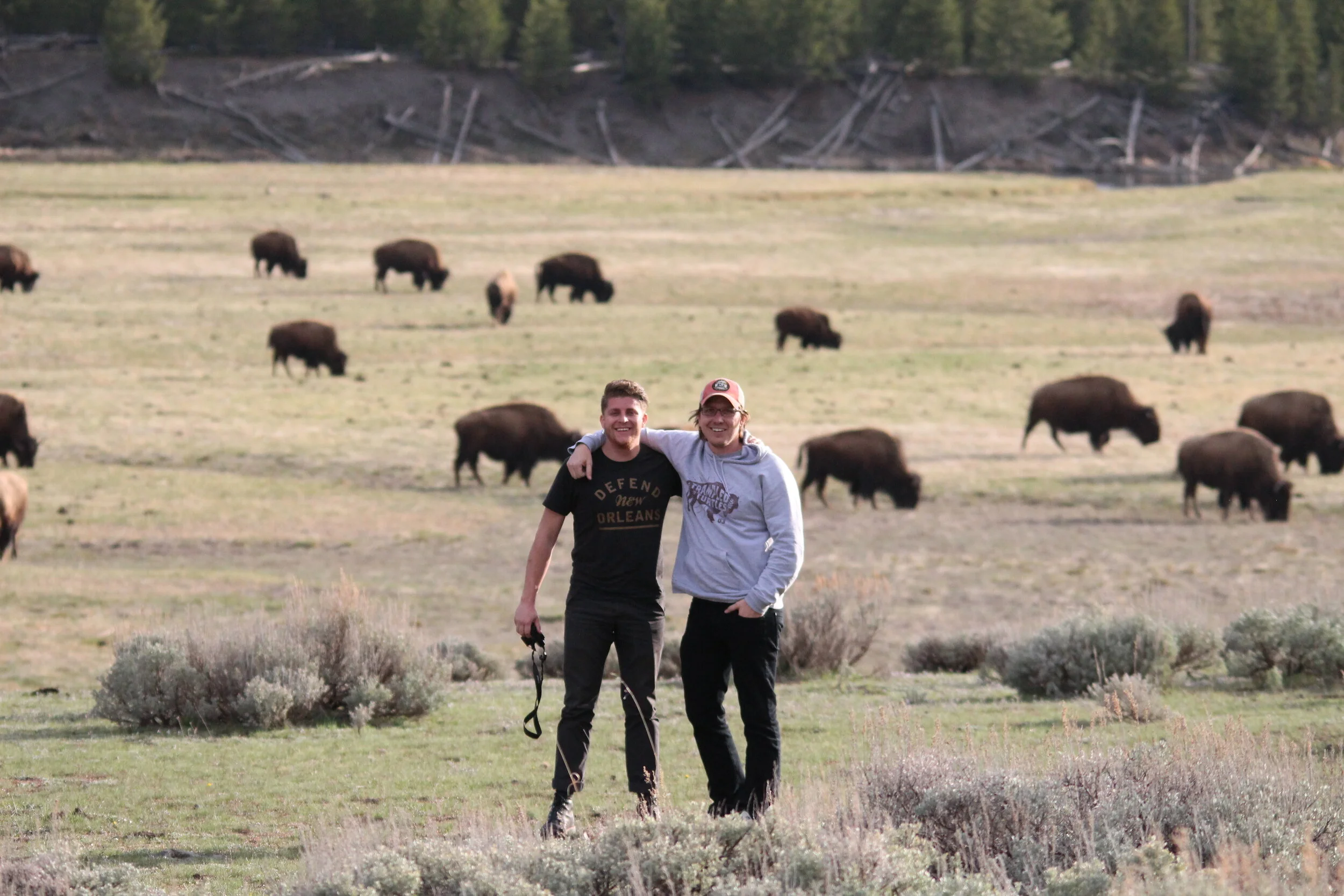
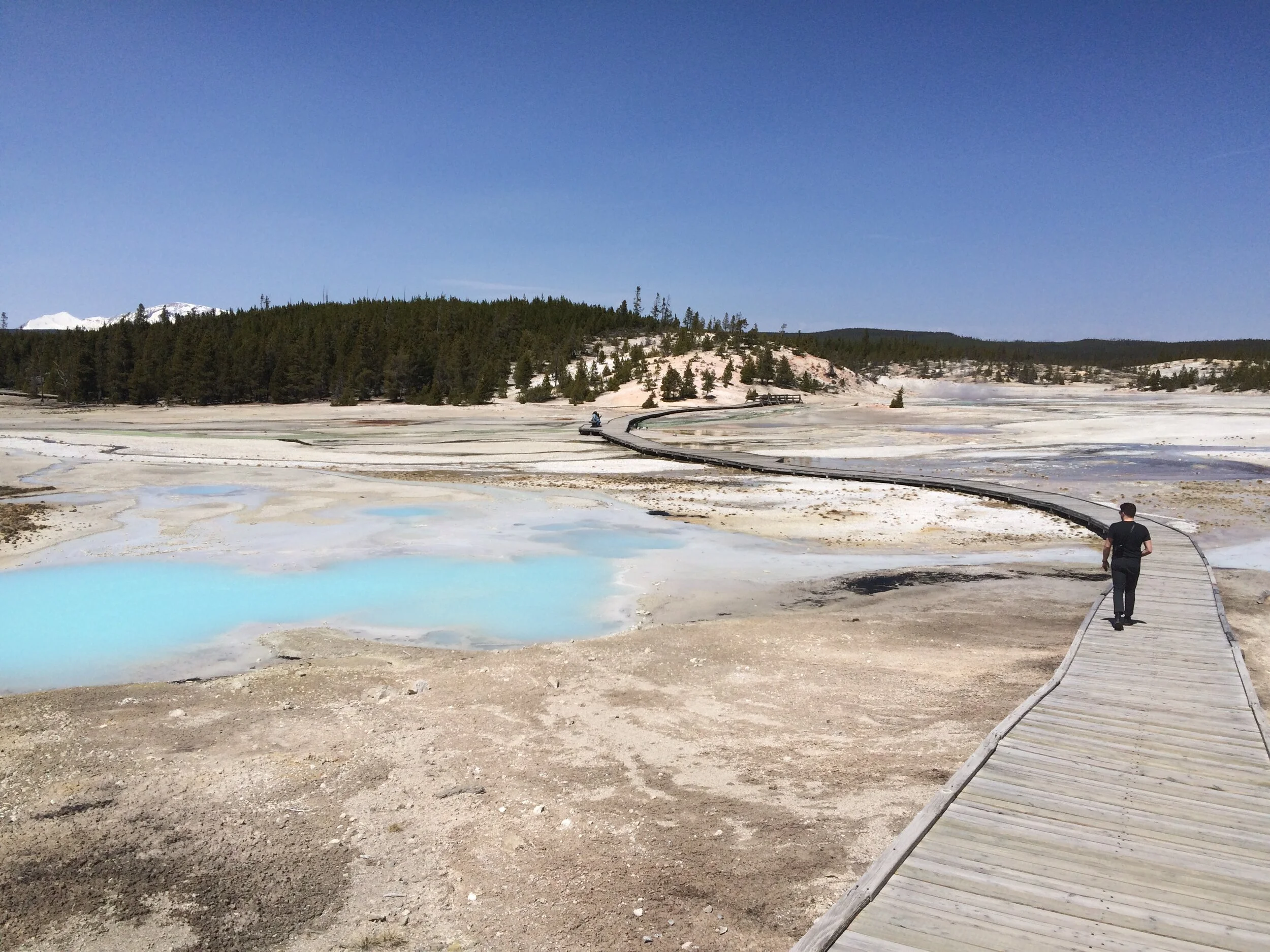

Your Custom Text Here
Park Number: 1/63
First Visited: Undocumented
When I set the goal of visiting all the U.S. national parks, I already had Yellowstone covered; growing up in Montana I frequented the park. Despite this, it wasn't until I took a college course taught by Yellowstone National Park Historian Lee Whittlesey that I developed a deeper respect for the area. I still get giddy each time I pass under the Roosevelt Arch.
I relish the fact that Yellowstone was the first national park on the planet (giving me great pride as I consider this my hometown park). Setting such a precedence, this park comes with a unique history. I specifically appreciate Yellowstone's chronicles of conservation and wildlife protection, as exemplified in 1894 with the story of George Bird Grinnell using media coverage in Forest and Stream magazine to bring wildlife poaching problems to national attention. This then led to the "Act to Protect the Birds and Animals in Yellowstone National Park," an act that initiated and inspired a long list of further laws that now protect wildlife throughout the country. For example, it's forbidden to remove biomass from the parks.
Wildlife in the park is replete; I never leave without a sighting, whether it be wolves after a feast, moose in a wetland, or grizzlies meandering on a hillside. But bison stand resolute in my mind when considering Yellowstone because these animals act as a reminder to a historical past of malfeasance and poor stewardship in the West. They now stand as a symbolic hope to our reexamined understanding and commitment to conservation.
Unique park experiences generally coincide with fortunate timing. For example, every spring Yellowstone closes its roads for maintenance for a few weeks, leaving the roadways open only to cyclists and pedestrians. Exploring the park at this time, you might see ten other cyclists on the roads with you. I’ve taken advantage of this opportunity three times now.
I return to Yellowstone nearly once a month, whether enjoying my own adventures or guiding first-time friends through the area. It doesn’t get old. This is because Yellowstone is an expansive park (only eight percent can be seen from the roads) with intricate backcountry trails weaving throughout geothermal hot spots, lodgepole pine forests, and gorgeous waterways. The change of seasons can alter all of this into new experiences throughout the year. I love visiting in the winter because, with few other people around, you have the more popular sites to yourself.
Yellowstone, of the sixty-two national parks in the system, is my park. I'll explore it for the rest of my life.
There are twenty-six tribes that have historic connections to Yellowstone, including Assiniboine and Sioux, Blackfeet, Cheyenne River Sioux, Coeur d’Alene, Comanche, Colville Reservation, Crow, Crow Creek Sioux, Eastern Shoshone, Flandreau Santee Sioux, Gros Ventre and Assiniboine, Kiowa, Lower Brule Sioux, Nez Perce, Northern Arapaho, Northern Cheyenne, Oglala Sioux, Rosebud Sioux, Salish and Kootenai, Shoshone-Bannock, Sisseton Wahpeton, Spirit Lake, Standing Rock Sioux, Turtle Mountain Band of the Chippewa, Umatilla Reservation, and Yankton Sioux.
Related Articles:
7 Yellowstone Hikes Ranging From Easy to Advanced
10 Bizarre and Interesting Facts About the U.S. National Parks
Park Number: 1/63
First Visited: Undocumented
When I set the goal of visiting all the U.S. national parks, I already had Yellowstone covered; growing up in Montana I frequented the park. Despite this, it wasn't until I took a college course taught by Yellowstone National Park Historian Lee Whittlesey that I developed a deeper respect for the area. I still get giddy each time I pass under the Roosevelt Arch.
I relish the fact that Yellowstone was the first national park on the planet (giving me great pride as I consider this my hometown park). Setting such a precedence, this park comes with a unique history. I specifically appreciate Yellowstone's chronicles of conservation and wildlife protection, as exemplified in 1894 with the story of George Bird Grinnell using media coverage in Forest and Stream magazine to bring wildlife poaching problems to national attention. This then led to the "Act to Protect the Birds and Animals in Yellowstone National Park," an act that initiated and inspired a long list of further laws that now protect wildlife throughout the country. For example, it's forbidden to remove biomass from the parks.
Wildlife in the park is replete; I never leave without a sighting, whether it be wolves after a feast, moose in a wetland, or grizzlies meandering on a hillside. But bison stand resolute in my mind when considering Yellowstone because these animals act as a reminder to a historical past of malfeasance and poor stewardship in the West. They now stand as a symbolic hope to our reexamined understanding and commitment to conservation.
Unique park experiences generally coincide with fortunate timing. For example, every spring Yellowstone closes its roads for maintenance for a few weeks, leaving the roadways open only to cyclists and pedestrians. Exploring the park at this time, you might see ten other cyclists on the roads with you. I’ve taken advantage of this opportunity three times now.
I return to Yellowstone nearly once a month, whether enjoying my own adventures or guiding first-time friends through the area. It doesn’t get old. This is because Yellowstone is an expansive park (only eight percent can be seen from the roads) with intricate backcountry trails weaving throughout geothermal hot spots, lodgepole pine forests, and gorgeous waterways. The change of seasons can alter all of this into new experiences throughout the year. I love visiting in the winter because, with few other people around, you have the more popular sites to yourself.
Yellowstone, of the sixty-two national parks in the system, is my park. I'll explore it for the rest of my life.
There are twenty-six tribes that have historic connections to Yellowstone, including Assiniboine and Sioux, Blackfeet, Cheyenne River Sioux, Coeur d’Alene, Comanche, Colville Reservation, Crow, Crow Creek Sioux, Eastern Shoshone, Flandreau Santee Sioux, Gros Ventre and Assiniboine, Kiowa, Lower Brule Sioux, Nez Perce, Northern Arapaho, Northern Cheyenne, Oglala Sioux, Rosebud Sioux, Salish and Kootenai, Shoshone-Bannock, Sisseton Wahpeton, Spirit Lake, Standing Rock Sioux, Turtle Mountain Band of the Chippewa, Umatilla Reservation, and Yankton Sioux.
Related Articles:
7 Yellowstone Hikes Ranging From Easy to Advanced
10 Bizarre and Interesting Facts About the U.S. National Parks